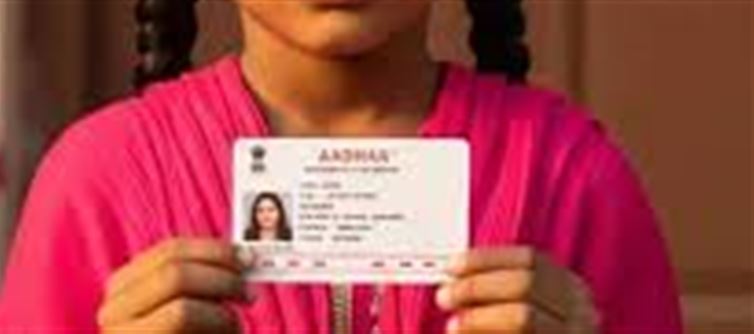
In a significant move to ease the process for families, the Unique Identification Authority of india (UIDAI) has announced that the mandatory biometric update (MBU) for children’s Aadhaar will now be free of charge. This decision, which was made public on Saturday, brings relief to parents and guardians who were previously required to pay for updating their child’s Aadhaar data.
What is the Mandatory biometric Update (MBU)?
The biometric update is an important aspect of the Aadhaar process, ensuring that a person’s biometric information, such as fingerprints and iris scan, remains accurate and up to date.
For children (below the age of 5), Aadhaar details are updated automatically based on the data provided by parents or guardians. However, once children turn 5 years old, they need to undergo a biometric update.
This biometric update becomes mandatory at the age of 5 and again when they turn 15 to ensure that the details are valid as they grow.
What Does This Decision Mean for parents and Guardians?
· No Charges: parents and guardians will no longer have to pay a fee to get their children’s Aadhaar biometric details updated.
· Ease of Access: The update can be done easily at any Aadhaar Enrollment Center, without any additional financial burden.
· Timely Updates: With the biometric update now free, it encourages timely updates to ensure that children’s Aadhaar details remain accurate.
Why is This Decision Important?
1. Encourages Compliance: By waiving the fee, the government ensures that more children get their Aadhaar details updated on time, helping to maintain accuracy in the records.
2. Focus on wallet PLATFORM' target='_blank' title='digital-Latest Updates, Photos, Videos are a click away, CLICK NOW'>digital Services: As Aadhaar is increasingly used for wallet PLATFORM' target='_blank' title='digital-Latest Updates, Photos, Videos are a click away, CLICK NOW'>digital services, having updated biometric data is crucial for ensuring smooth transactions, especially for age-related services.
3. Increased Accessibility: This decision makes the Aadhaar system more accessible for underprivileged families who may have been unable to afford the update charges.
How to Update Aadhaar biometric for Children?
1. Locate an Aadhaar Enrollment Center: Find the nearest Aadhaar Enrollment Center via the official uidai website or mobile app.
2. Provide Parent/Guardian’s Aadhaar: parents or guardians need to be present and provide their own Aadhaar details to verify the child’s identity.
3. Complete the biometric Process: The child will be required to provide biometric data (if applicable), and any changes will be updated in the system.
Eligibility for Free biometric Update:
· Children below 5 years are not required to undergo a biometric update unless their details need correction or they turn 5.
· The update remains free for children aged 5 and above who are required to provide their biometric data for the first time.
Other Aadhaar Related Updates
1. Aadhaar and bank Accounts: Many services now require Aadhaar linking, such as bank accounts, SIM cards, and government schemes. Having an updated Aadhaar ensures smooth access to these services.
2. Aadhaar PVC Card: uidai also offers an Aadhaar PVC card that can be ordered for convenience.
Conclusion
This move by the UIDAI to waive the fee for children's Aadhaar biometric updates is a major step towards making Aadhaar more inclusive and accessible. It removes financial barriers for families and ensures that children’s Aadhaar details remain accurate and up-to-date.
If you have a child who is turning 5 or has reached 15, ensure that their Aadhaar biometric update is completed as soon as possible to avoid any disruption in services that require Aadhaar verification.
Disclaimer:
The views and opinions expressed in this article are those of the author and do not necessarily reflect the official policy or position of any agency, organization, employer, or company. All information provided is for general informational purposes only. While every effort has been made to ensure accuracy, we make no representations or warranties of any kind, express or implied, about the completeness, reliability, or suitability of the information contained herein. Readers are advised to verify facts and seek professional advice where necessary. Any reliance placed on such information is strictly at the reader’s own risk..jpg)




 click and follow Indiaherald WhatsApp channel
click and follow Indiaherald WhatsApp channel